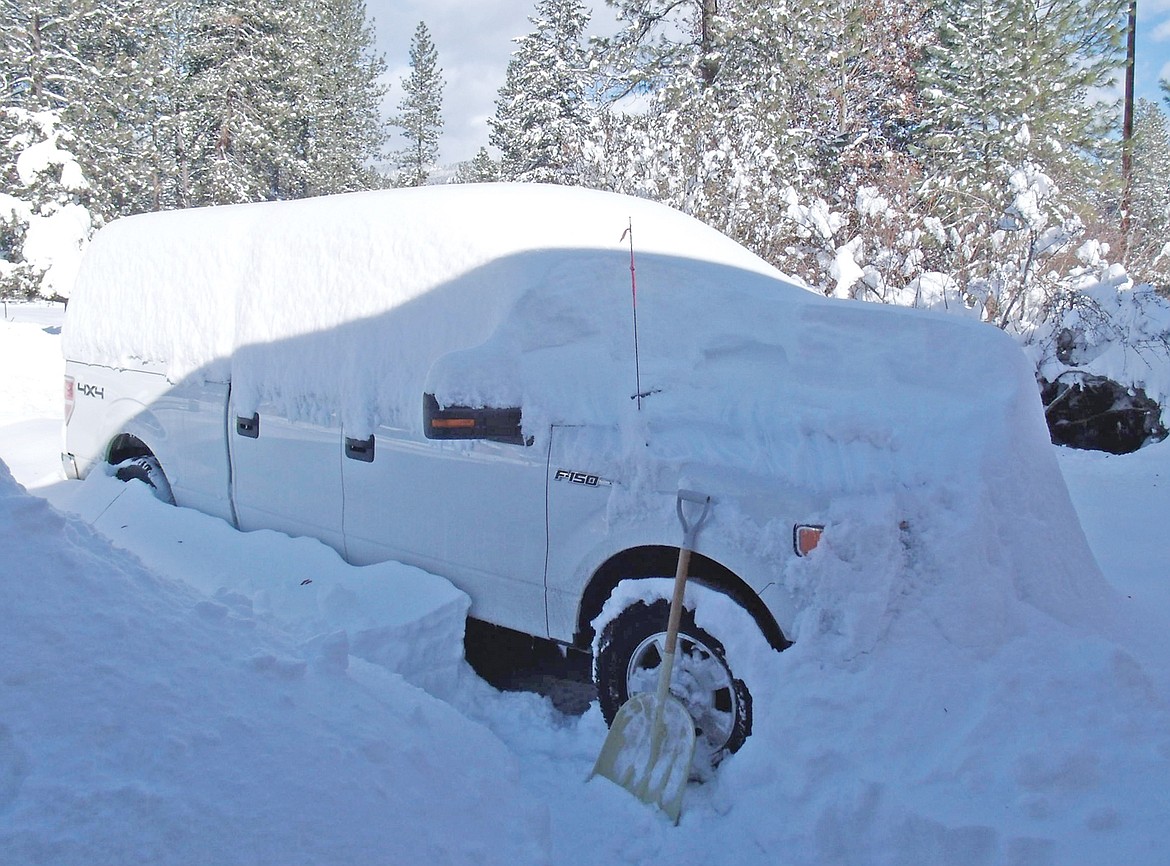Dig Out Day
A red-shafted flicker was drumming outside as I left to go ice fishing early Friday morning. They say each one has it’s own drumbeat. It had started snowing early that morning, and it did not stop for several days. The fish weren’t biting real good, and the snow kept coming. I laid one beautiful rainbow on the ice and lost one.
A pileated woodpecker was working the base of an old ponderosa pine snag, and the snow kept falling. A friendly fisherman named Sean and his son Lake came by and we concurred, the fish were not biting, and the snow was coming down harder. My one Banquet beer had turned to a slushy anyway, and my poles were silent except for the wind whispering through them, so I headed out.
It was not casual driving home, most of the way it was 45 mph with gusts blowing and some vehicles creeping along. Having thrown my one pretty rainbow back in, I opted for a quick supply stop. Pasta, potatoes, hot chocolate and oatmeal would round out my white-tailed deer burger and steak.
It was really coming down now as I stripped down my ice armor and hit the hot shower. Checking my emails, I already had a few cancellations for our Winter Animal Tracking Class scheduled for the following Saturday morning. Travel was getting hazardous. On the line, the wildlife research live-trapping line that is, things are not easy.
Sno-Warriors work 100 days straight, basically from Jan. 7 through February, March, and wrap up around April 7! It is the best time to launch efforts to track, identify, and radio-collar Canadian lynx, wolverine, fisher, and pine marten. Generally, tracking counts and forays into the wild to identify and study mid size carnivore behavior and tracks are made from 24 to 48 hours after a snowfall, ideally 36 hours.
This gives the animals time to travel and forage, to run their routes that are interconnected to hunting trails, day bed sites, mating areas and secure locations. Tracking wild animals in constantly falling, heavy snows is tricky, the animal sign and behavior is only fresh for an instant, then it is obliterated by the silent, white blanket.
The instinct is to push on. Rarely, if ever do we delay or cancel an outdoors program. We say we will hold and check the weather in the morning. Early wake up call is in the dark, but there is plenty of the white stuff around. It has not stopped. The forecast is not good. Another cancellation and we throw in the towel. The re-schedule date for the Friends of Scotchman Peaks Animal Tracking Adult Outdoor Education Program is Saturday, April 8, 2017, meeting at Heron Community Center at 10 a.m. Montana time, and 9 a.m. PST. We did not give up! We simply re-scheduled to a more convenient date. Wise move under the circumstances. We won’t need the meeting hall, we will just meet and begin tracking. That’s the plan anyway.
It stopped snowing for a few hours briefly on Monday. It was just enough time for most of us to dig out. Enough time for us all to realize we are not in charge. We adapt, but we are not in charge. Then it snowed for another day and finally quit. But we didn’t, we just adapted!




